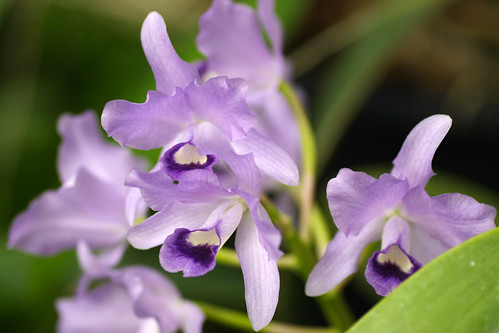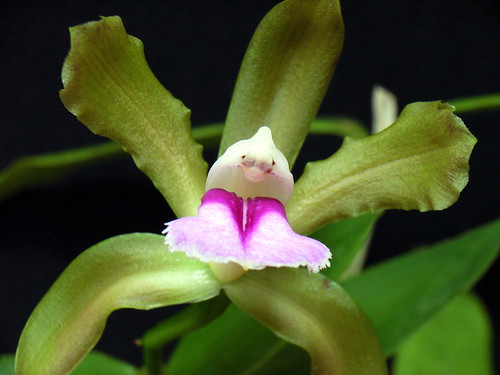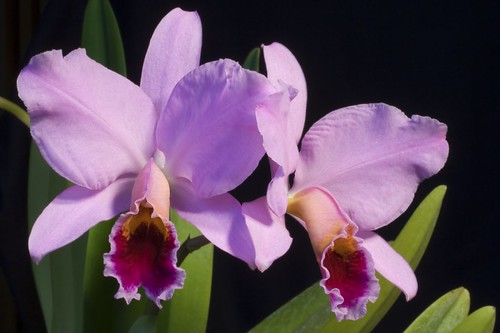
This species is also know as the Glaucous Beaked Laelia and is found growing in Guatemala and Mexico. Rhyncholaelia glauca grows on trees in mountain forests from near sea level to 1500 meters. The original plants were discovered growing near Veracruz, Mexico.
Plants are medium-sized and look a lot like unifoliate Cattleya orchids. This species was thought to be a Cattleya species until it flowered when it was first imported to England.
Flower grow to 5 inches (12 cm) wide. The flower of Rhyncholaelia glauca has apple green petals and a white, heart-shaped lip. The margin of the lip is complete, not heavily fringed like Rhyncholaelia digbyana. Occasionally, some flowers will have a pink cast. Flowers are very fragrant and have a sweet scent. Flowers have a heavy waxy substance and are long-lived. Blooms in late Spring to Summer.
Provide warm or intermediate growing temperatures. This plant grows best mounted on cork bark, tree fern plaques, or slatted baskets. Provide high light and good air circulation. The roots need to dry between watering. Few hybrids have been made using this species.








